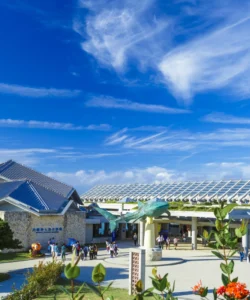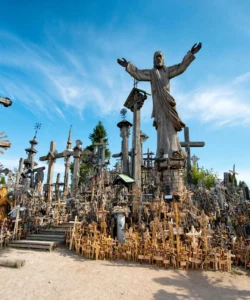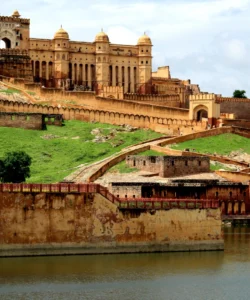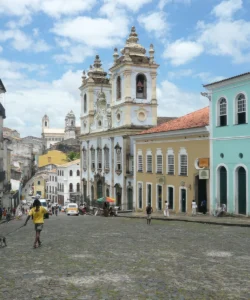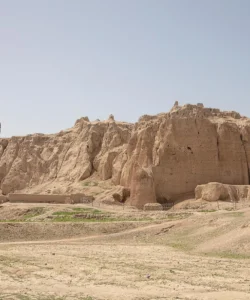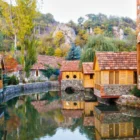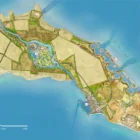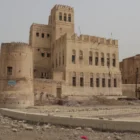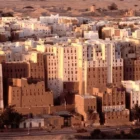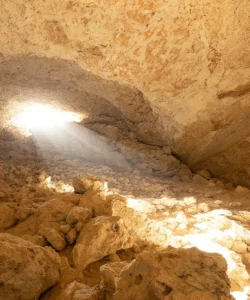Sanahin Monastery (Armenian: Սանահինի վանք, Sanahini vank) is a prominent 10th-century Armenian monastic complex located in the Lori Province. It is a UNESCO World Heritage Site, celebrated not only for its architectural significance but also for its historical role as a major educational and cultural center in medieval Armenia. Its name, “Sanahin,” is famously believed to mean “this one is older than that one,” a reference to its nearby sister monastery, Haghpat.
Listen to an introduction about Sanahin Monastery
Name and Address
- Name: Sanahin Monastery. The name is thought to derive from the Armenian phrase “Sa nranic hin eh” (Սա նրանից հին է), meaning “this one is older than that one,” referring to Haghpat Monastery.
- Address: Sanahin village, Lori Province, Armenia.
- Location: Situated on a plateau above the right bank of the Debed River gorge, a few kilometers south of the town of Alaverdi. It’s approximately 165-170 km (102-105 miles) north of Yerevan.
How to Get There
Sanahin Monastery is a key destination in northern Armenia, often visited alongside Haghpat Monastery due to their proximity:
- From Yerevan:
- By Car/Taxi: A direct drive takes about 2.5 to 3 hours. Taxis are available, or you can rent a car for flexibility.
- By Public Bus/Minibus (Marshrutka): Take a bus or minibus from Yerevan’s Kilikia Central Bus Station to Alaverdi (journey time can vary from 2.5 to 4 hours). From Alaverdi, you’ll need to take a local taxi or a short minibus ride up to Sanahin village.
- By Train: A train from Yerevan to Vanadzor (Lori’s provincial capital) takes about 4.5 hours. From Vanadzor, you’d then need to arrange transport to Sanahin.
- Organized Tours: Many tour operators offer combined day trips or multi-day tours that include Sanahin and Haghpat Monasteries, often along with other sites in Lori Province.
- From Haghpat Monastery: Sanahin and Haghpat are only about 12 km (7.5 miles) apart. You can take a short taxi ride (around 20 minutes) or even hike between them via the “World Heritage Trail” (a 4-hour route).
- Visitor Information:
- Entrance Fee: There is no entrance fee to visit the monastery complex itself, though donations are welcome.
- Hours: Monasteries typically don’t have strict opening hours, but it’s generally safe to visit between 10 AM and sundown.
Landscape and Architecture
Sanahin Monastery is a magnificent example of medieval Armenian architecture, skillfully integrated into its natural plateau setting.
- Architectural Ensemble: The complex is a large group of buildings, primarily constructed from local light gray polished basalt stone, and is laid out on two rectangular axes. It includes:
- Surb Astvatsatsin Church (Holy Mother of God): The oldest structure, dating back to 934 AD (or 928-944 AD). It’s a central-domed, cross-shaped church.
- Surb Amenaprkich Church (Holy Redeemer): The main temple of the monastery, built between 957-966 AD. It features a cross-shaped layout and a massive dome. Bas-reliefs of Kings Smbat and Gurgen holding a model of the church are notable on its eastern facade.
- Gavit (Narthex/Entrance Halls): Several impressive gavits, including one added in the early 13th century, known for their intricate internal compositions and unique column capitals often decorated with animal heads.
- Belfry: A three-story bell tower built in the 13th century (c. 1245), considered one of the oldest and most architecturally significant belfries in Armenia, with a unique volumetric-spatial solution.
- Scriptorium (Library): A large vaulted structure built in 1063, with niches for storing codices and books, highlighting the monastery’s intellectual role.
- Academy of Gregory Magistros: An 11th-century academy, showcasing the monastery’s function as a major center of learning.
- Mausoleums and Khachkars: Burial vaults for princely families (like the Kyurikians and Zakaryans) and numerous finely carved khachkars (Armenian cross-stones) are found throughout the complex.
- Refectory: A 13th-century refectory with a unique system of intersecting arches.
- Integration with Landscape: The buildings are skillfully integrated into the plateau above the Debed gorge, blending with the impressive mountain landscape. The architecture is generally simple and monumental, with restrained ornamentation emphasizing cornices, doors, and window frames.
What Makes It Famous
Sanahin Monastery’s fame is deeply rooted in its historical significance as a center of learning and its architectural grandeur:
- UNESCO World Heritage Site: Inscribed on the UNESCO World Heritage List in 1996 (along with Haghpat Monastery), recognizing them as masterpieces of medieval Armenian religious architecture and major educational centers.
- Prominent Educational Center: During the 10th-13th centuries, Sanahin was a vital intellectual hub, housing a renowned university, academy, and scriptorium. Scholars here taught theology, philosophy, rhetoric, medicine, music, and other sciences, and many valuable manuscripts were copied and illuminated.
- Architectural Significance: It represents the peak of Armenian religious architecture, showcasing a blend of Byzantine ecclesiastical and traditional Armenian vernacular styles. The unique gavits and the early belfry are particularly noteworthy.
- Sister Monastery to Haghpat: Its close relationship and shared UNESCO status with Haghpat Monastery, and the legend behind its name, make it a compelling pair for visitors.
- Rich Artistic Details: The monastery features impressive bas-reliefs, frescoes (fragments remain), and numerous intricate khachkars.
Differences from Other Landmarks
Sanahin Monastery distinguishes itself from other Armenian landmarks in several key ways:
- Educational Emphasis: While many monasteries had scriptoria, Sanahin (along with Haghpat) was particularly famous for its extensive university and academy, making it a pre-eminent intellectual center of medieval Armenia, a role more pronounced than at sites like Geghard or Khor Virap.
- Architectural Complex vs. Single Focus: Unlike Zvartnots (a ruined cathedral) or Khor Virap (focused on a single historical event and view), Sanahin is a sprawling complex of interconnected religious and secular buildings, showcasing a broader range of medieval monastic life and functions.
- Shared UNESCO Status: Its direct pairing with Haghpat Monastery on the UNESCO list highlights their complementary nature and shared architectural/historical evolution, a unique characteristic compared to other individual monastic sites.
- Landscape Integration (Plateau): While located above a gorge, Sanahin is built on a relatively flat plateau, allowing for a more expansive and integrated complex of buildings, differing from the cliff-hugging or rock-cut nature of some other monasteries.
Sanahin Monastery Photos:
































